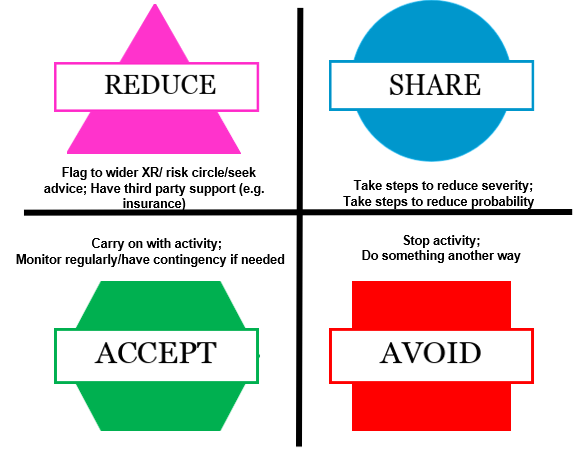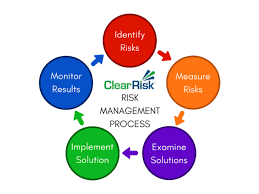How to do it
STEP ONE: A RISK IDENTIFICATION WORKSHOP: (Risk circle can facilitate)
- What are significant risks for our circle?
- What is a concern for our circle?
- What worries do we have for the circle?
A risk is that X happens, caused by Y and with the consequence of Z.
Anything goes – GET IT OUT – capture lots of risks without evaluation - that comes later. Build on what others say – one idea or concern can trigger another.
Then make sure you record the risks you just spent time identifying in a risk register! The Risk circle can provide a template.
STEP TWO: EVALUATE THE RISKS:
- How bad would it be if this risk happened?
- Would it limit our ability to carry out our mandate?
- What other circles/parts of XR might it impact?
- Who else might it impact? (outside of XR)
- Do we stand to lose anything if it happens? (donations; financial cost)
- What might cause this risk?
Answering these questions for each risk and recording the answers in your Risk Register means you now know the probability andimpact of each risk. The register automatically calculates the severity of each risk and now you can see and prioritise those of high severity.
If you identify any risks with a high severity to XRUK, please notify the Risk circle.
STEP THREE: DECIDE HOW TO ACT:
Decide what actions to take to deal with the highest priority risks. There are 4 types of action :
- Avoid: Stop the activity or do it differently
- Reduce: Take steps to reduce the risk's impact and/or to reduce its probability
- Transfer: Contact the XR Risk circle for help or get someone else to take action
- Accept: Carry on with the activity, monitor it regularly and identify a contingency action.
The first three actions reduce the severity of the risk. The last one allows you to plan a contintency action should the risk actually happen. You should try to both reduce the severity and plan for it happening. Record these actions within your Risk Register so that you remember what was decided and who is taking action.
Meet again to check if these actions have completed. If so, re-evaluate the risk and see if its severity has reduced. If it has, you can stop worrying.
STEP FOUR: REPEAT
Things change.... so it is a good idea to regularly (suggest once/month) review your circle's risks and check whether the mitigating actions have been done. New risks may have arisen and your known risks may become more (or less) critical. That may give you a new set of actions.
LARGER CIRCLES
A large circle may contain diverse sub-circles and if so, each should carry out risk management. The sub-circles may have different levels of risk and should try to rank themselves so the riskiest circles can be prioritised for any support they may need.
EXAMPLE OF A RISK REGISTER
[Need to find a way to paste a spreadsheet or PDF here]
ITS A RISKY BUSINESS - XR RISK MANAGEMENT IN A NUTSHELL
- Ask the Risk circle to join one of your circle's meetings to help you discuss risk management
- Set time aside with your circle to brainstorm risks
- Prioritise your risks and decide what you want to tackle first
- Use the 4 Risk Management action types to manage high priority risks
- Ask the Risk circle about tools for getting to the “root cause” or decide the best “action” to take
- Make a commitment to review risks
- The Rsik Circle can't tell you what are your risks or how to manage them but these tools help you to do it


